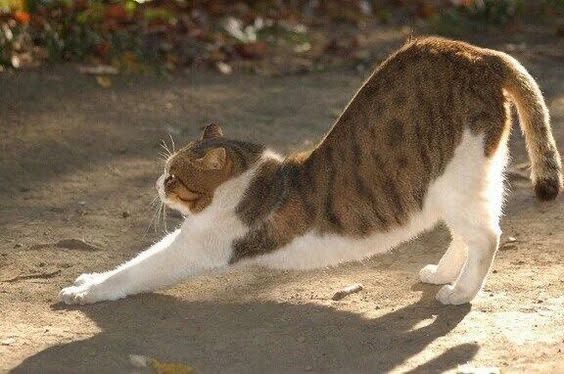You’ve probably seen your cat stretch her back legs many times, especially after a long nap or a playful session. But do you know why your cat Stretches Back Legs? Is it just a simple way to relax her muscles, or is there more to it than meets the eye?
Well, today I’ll explore the fascinating reasons behind a cat’s stretching behavior, and what it can tell you about her mood, health, and personality. You’ll also learn how to encourage healthy stretching habits, and when to be concerned about excessive or abnormal stretching.
You might think you know your cat well, but you’ll be surprised by some of the secrets she’s hiding in her back legs. Read on to discover the truth about this curious cat behavior, and how to make the most of it.
Why Do Cats Stretch Their Back Legs
One of the most common and curious behaviors that cats exhibit is stretching their back legs, either one at a time or both together. I’m sure you have seen your cat kick his back legs after waking up, before or after playing, or just randomly throughout the day.
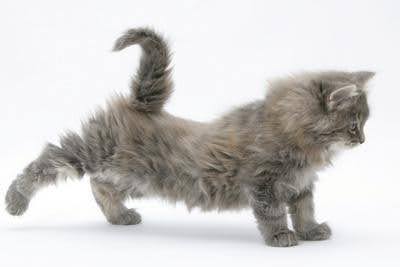
But why do cats stretch their back legs so much, and what does it mean? Let’s find out-
Good Morning, Hooman!
Have you seen your hairy friend stretch right after waking up? That’s how they say, “Good morning!” Cats like to be with others, and stretching is not only about making their body loose; it’s also a way of saying hi and being with others. Think of it as their kind of hand touch, but with a cute little stretch added in!
It’s Time To Loosen Up Muscle
Just like us hitting the yoga mat, cats stretch to loosen up their muscles. It’s their way of staying flexible and eligible for all those acrobatic moves they pull off. Plus, it helps relieve stress. So next time you catch your kitty in a stretch or kicking their back legs, know they’re just doing some kitty yoga to zen out.
Getting Ready To Hunt Some Prey
Stretching also serves a practical purpose for our little hunters. It’s like they’re gearing up for the hunt, getting their muscles ready for action. Additionally, it’s a subtle defense mechanism, keeping them quick and ready to jump at any time.
Let’s Have Some Fun
Sometimes, stretching is just a precursor to playtime! Cats love to stretch before engaging in their favorite games, like chasing toys or stalking imaginary prey. It’s their way of getting in the zone for some serious fun.
This Region Belongs To Me!
Stretching isn’t just about muscles; it’s also about marking territory. When a cat stretches, they release pheromones from the glands in their paws, essentially saying, “This spot is mine!” So, in a way, every stretch is a little declaration of ownership.
Happy To See You
Ever come home to your cat stretching and rubbing against your legs? That’s not just a coincidence; it’s a sign of affection! Stretching releases feel-good endorphins, so when they stretch around you, they’re not just saying hello—they’re showing love.
They just feel so content when they see you. If your cat stretches when they see you, it’s a way of expressing their endless happiness.
Hey, Look At Me!
Cats love attention, and sometimes stretching is their way of saying, “Pay attention to me!” It’s like a little kitty stretch-and-wave to grab your focus and affection. So, if you have a question like why does your cat stretch on you or in front of you – it’s simple, they want your attention.
Cooling Body Temperature
Lastly, stretching can help cats regulate their body temperature. By stretching, they increase blood flow to their muscles, which can help them cool down, especially on a warm day or after playtime.
Is It Normal For Cats to Stretch Their Hind Legs a Lot?
Yes, it’s perfectly normal! Stretching is a natural and healthy behavior for cats, and most of them do it several times a day. However, some cats might stretch their hind legs more than others, or more than usual.
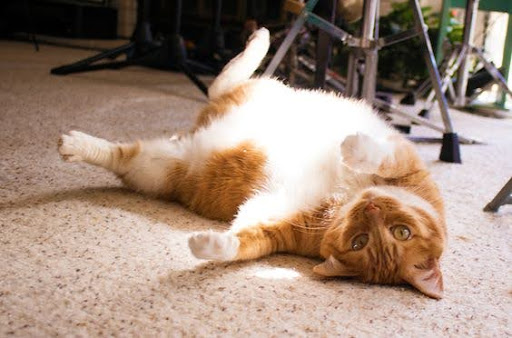
This could be due to various factors, such as:
- Personality: As I mentioned earlier, cats might stretch more to keep their muscles in shape and ready for action. Moreover, they might also stretch more to express their mood and emotions, such as happiness, curiosity, or excitement.
- Environment: Do you know surrounding and stimuli can also affect cat stretching legs? For example, they might stretch more when they are in a new or unfamiliar place, or when they see something interesting or enticing, such as a bird or a toy.
- Health: Moving or kicking back legs can happen due to health issues, like pain, discomfort, or inflammation in their joints or muscles. In that case, cats stretch more to relieve the symptoms, or to signal that something is wrong. This is especially common in older cats, who are more prone to arthritis and other age-related conditions.
When a Cat’s “Back Leg Stretching” Behavior Become a Concern
While your cat’s back-leg ballet is usually a beautiful display of feline flexibility, there are instances where it might signal something more. Here’s how to tell if your cat’s stretching habits are crossing the line into excessive and potentially worrisome territory.
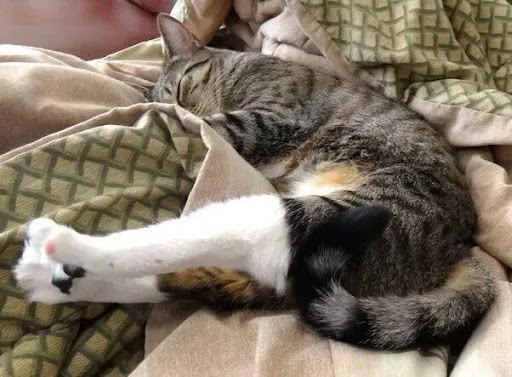
How to Tell If Your Cat Is Stretching Too Much
You can tell by observing some signs, especially when your cats kick back legs while walking. For instance-
- Frequency: If your cat seems to be stretching their back legs constantly, especially in situations where it doesn’t make sense (like mid-nap or while eating), it might be a sign of discomfort or pain.
- Intensity: Does your cat stretch with unusual force or contortions? If their stretches seem strained or unnatural, it’s worth keeping an eye on.
- Vocalizations: Does your cat meow or yelp while stretching? This could be a sign of pain or discomfort.
- Lameness: Does your cat appear limpy or hesitant to put weight on their hind legs after stretching? This could indicate a musculoskeletal issue.
- Changes in behavior: Has your cat become less playful, lethargic, or withdrawn? This could be a symptom of an underlying health problem.
Possible Health Problems Caused by Overstretching in Cats
- Musculoskeletal Issues: Overstretching can be a symptom of underlying conditions like arthritis, hip dysplasia, or muscle strains.
- Neurological Problems: Issues like spinal cord disease, neurological disorders or obsessive-compulsive disorder (OCD) can affect your cat’s muscle control and lead to excessive stretching.
- Pain: Any source of pain in the hind legs, including injuries or internal issues, can cause your cat to stretch excessively as a way to alleviate discomfort.
Excessive Back Leg Stretching in Cats: What To Do Next
When your cat’s once-adorable leggy contortions become a cause for concern, it’s time to shift from purrs to a proactive approach. Let’s see what to do when your furry friend’s stretching starts raising red flags.
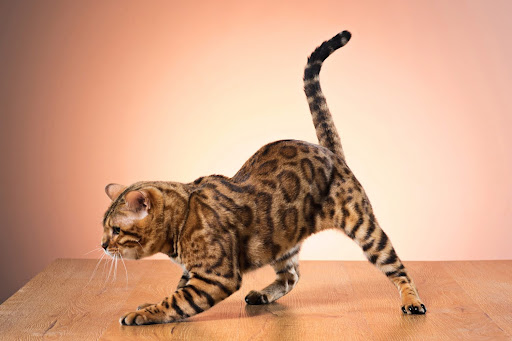
When Your Cat Needs a Vet Visit
If you notice any of the warning signs of overstretching mentioned earlier, don’t delay. Schedule a vet visit promptly. Early diagnosis and intervention are key to ensuring a speedy and full recovery for your feline friend.
Here are some specific situations that warrant immediate veterinary attention:
- Excessive vocalization during or after stretching, especially whining or yowling.
- Visible lameness or difficulty putting weight on one or both hind legs.
- Changes in gait or posture, such as dragging their legs or walking hunched over.
- Loss of appetite or sudden disinterest in playtime.
- Difficulty climbing onto furniture or jumping to their usual perches.
- Unusual swelling or redness around the joints or muscles of the hind legs.
Medication and Care for Cats To Recover From Stretching-Related Problems
Your vet can examine your cat and diagnose the cause of the excessive stretching, as well as prescribe the appropriate treatment and care. Your vet can also advise you on how to prevent further stretching-related problems, and how to monitor your cat’s recovery.
Depending on the underlying cause of your cat’s stretching, your veterinarian will recommend the appropriate treatment plan. This may include:
- Pain medication: To manage discomfort and inflammation.
- Antibiotics: In case of infections or joint disease.
- Muscle relaxants: To ease muscle tension and spasms.
- Physical therapy: To improve flexibility and strengthen muscles.
- Weight management: If obesity is a contributing factor.
- Supportive measures: Providing comfortable bedding, ramps, and other adaptations to make your cat’s environment easier to navigate.
How Can You Encourage Your Cats For Healthy Stretching
So, it’s time to explore how you can encourage your beloved pet to indulge in the purr-fect stretch routine for optimal health and happiness.
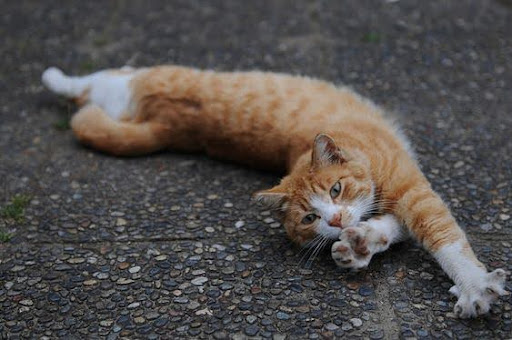
Providing a stimulating environment
One of the best ways to encourage your cats for healthy stretching is to provide them with a stimulating environment Why is my cat stretching back legs that sparks their curiosity and interest.
Offer them a variety of toys, such as balls, feathers, mice, or lasers, that they can chase, pounce, or bat at. Then provide them with scratching posts, cat trees, or shelves, that they can climb, perch, or scratch on.
Give them access to windows, balconies, or gardens, where they can watch birds, squirrels, or other animals. Another thing you can do is rotate or change the toys, furniture, or scenery, to keep them from getting bored or used to the same things.
Incorporating play and exercise
Another way to encourage your cats for healthy stretching is to incorporate play and exercise into their daily routine.
Playing with them for at least 15 minutes a day, using toys, games, or your hands, to stimulate their physical and mental activity. Encourage them to run, jump, or chase, by throwing or hiding treats, toys, or catnip, around the house or yard.
Oh, you can also join them in their stretching sessions, by mimicking their movements, or gently massaging or stroking their hind legs. Don’t forget to reward them with praise, affection, or treats, when they stretch or play, to reinforce their positive behavior.
Respecting Your Cat’s Needs and Preferences
A third way to encourage your cats for healthy stretching is to respect their needs and preferences, and let them stretch at their own pace and comfort level.
Understand their body language and vocalizations, and learn to recognize when they want to stretch, play, or rest. Give them enough space and privacy, and not forcing or interrupting them when they stretch or sleep.
Remember, try to avoid touching, pulling, or pushing their hind legs, or any other part of their body, without their consent or invitation.
Building Trust and Love with Your Cat
And finally, build trust and love with your cat, and make them feel happy and secure. To do that, spend quality time with them, and give them your attention and affection, such as cuddling, petting, or talking to them.
Establish a routine and a bond, and be consistent and reliable, such as feeding, playing, or grooming them at the same time every day. Always be patient and gentle with them, and not expecting them to be perfect or human, but accepting them for who they are.
FAQ
Why does my cat sometimes stretch against furniture or walls?
Your cat might stretch against furniture or walls to mark their territory, to scratch their back or neck, or to stretch their muscles more effectively. Stretching against a hard surface can provide more resistance and pressure, which can make the stretch more satisfying and beneficial.
Is stretching the same as yawning in cats?
While stretching and yawning are both common behaviors in cats, they serve different purposes. Stretching helps maintain muscle health, while yawning is often a sign of relaxation or tiredness.
Does stretching help digestion systems in cats?
Stretching helps cats digest by activating their belly muscles and organs, and boosting their blood flow and energy. It also prevents tummy troubles by easing the strain in their gut. It makes them cozy and calm after eating.
Conclusion
Your cat stretching her back legs is a normal and healthy behavior that has many meanings and benefits. It can help her relax, express, communicate, and prepare for various situations. However, you should also be aware of the signs of excessive or abnormal stretching, and consult your vet if you have any concerns.
Stretching is one of the ways your cat shows you her personality and mood, and you can encourage it by providing a stimulating, safe, and loving environment for her.
If you have any suggestion or opinion to share, comment down below. Thanks for reading!

